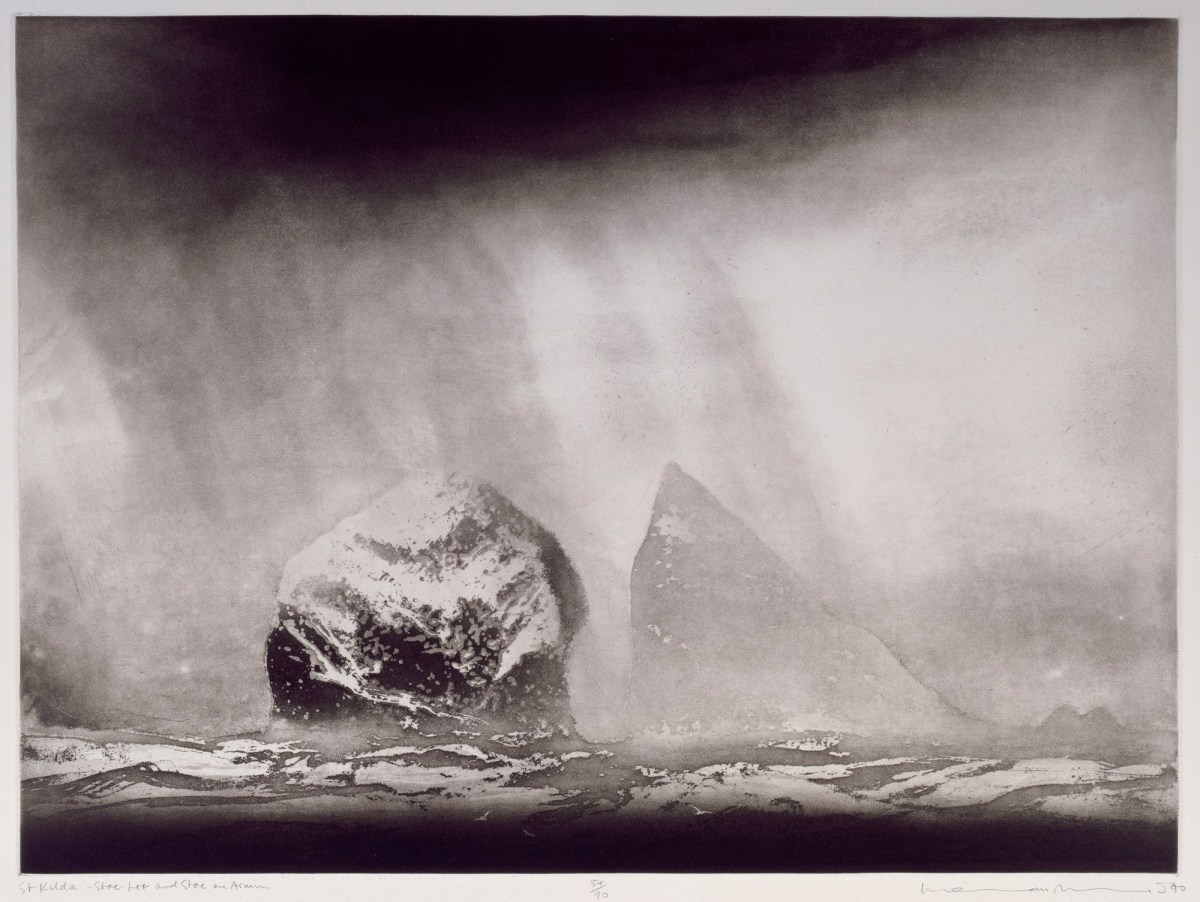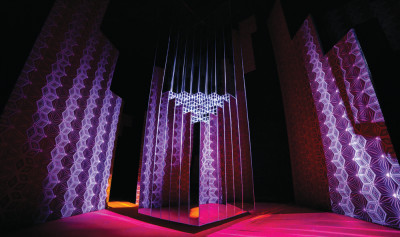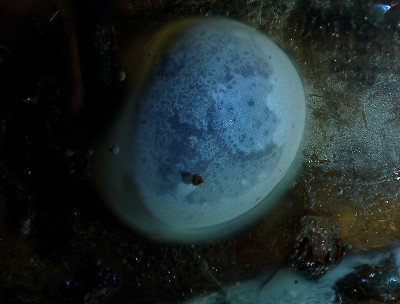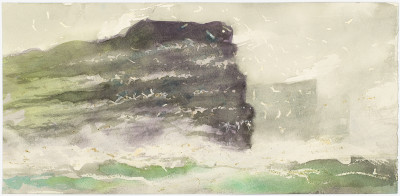
Norman Ackroyd RA, St Kilda - Stac Lee and Stac an Armin, 1990.
Etching and aquatint. 438 mm x 592 mm. © Royal Academy of Arts. © Photo: Royal Academy of Arts, London. Photographer: John Hammond.
This image is not available to download. To licence this image for commercial purposes, contact our Picture Library at picturelibrary@royalacademy.org.uk
St Kilda - Stac Lee and Stac an Armin, 1990
Norman Ackroyd RA (b. 1938)
RA Collection: Art
On free display in Collection Gallery
Standing at 165 and 191 metres high respectively, Stac Lee and Stac an Armin are the tallest sea stacks in Britain. Located off the north-west coast of Scotland, they form part of the archipelago of St Kilda. Although St Kilda was inhabited for thousands of years, its isolated position eventually led to the last few residents being evacuated in 1930. Today St Kilda is a national nature reserve and world heritage site that includes a diverse population of birds and other species.
The artist Norman Ackroyd RA first travelled to St Kilda in July 1989, writing of his experience later that year:
'For many years St. Kilda has been an obsession. Previous attempts to make the crossing have foundered on the hostility and unpredictability of the Northern Atlantic. The archipelago, the most isolated and spectacular of all British islands, situated 50 miles west of the Outer Hebrides and 100 miles west of the Scottish mainland is, even today, difficult to access. My recent visits to the extremities and islands of Cork, Kerry and Clare only strengthened my resolve to make the journey. In July of this year, in spite of heavy seas, I finally set sight and foot on the magical land.'
Ackroyd produced a number of works depicting St Kilda as a result of this trip, including St Kilda - Stac Lee and Stac an Armin. Of Stac Lee (the sea stack on the left of this composition), Ackroyd has written more recently:
'Stac Lee rises like a tooth out of the ocean. The young gannets (gugas) which nest here in their thousands were harvested by the St Kildans as their main source of food. In a cleft near the summit is a small bothy where the islanders took refuge, often for days, when the weather turned.'
Ackroyd's choice of these inhospitable, remote locations is reminiscent of J. M. W. Turner RA's desire to render the sublimity of the landscape. Allegedly, Turner once said that in order to witness a storm at sea he had himself lashed to a ship's mast for four hours, stating that 'I did not expect to escape; but I felt bound to record it if I did'. Turner's engagement with nature in its often dangerous, but also sublime, extremes arguably carries on into the present day in Ackroyd's work.
As well as inspiring Ackroyd's choice of subject matter, Turner was also influential in his experimental use of printmaking. Although, unlike Turner, who made pencil and watercolour drawings on his travels that were made into prints back in the studio, Ackroyd sometimes makes etchings in front of the subject:
'Although I paint and draw all the time, etching has been a continuous preoccupation since I produced my first plate in 1957. […] I have always carried small etching plates on my travels, alongside my drawing and watercolour paraphernalia.'
St Kilda - Stac Lee and Stac an Armin is Ackroyd's Diploma Work that he gave to the Royal Academy in 1992 after he was elected a Royal Academician in the category of Engraver the previous year.
Object details
438 mm x 592 mm
Start exploring the RA Collection
- Explore art works, paint-smeared palettes, scribbled letters and more...
- Artists and architects have run the RA for 250 years.
Our Collection is a record of them.



